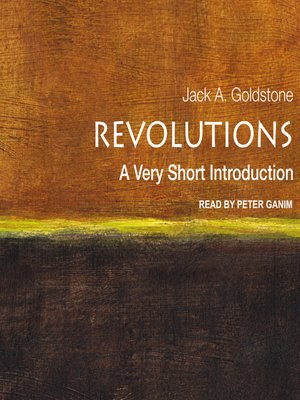Revolutions
audiobook (Unabridged) ∣ A Very Short Introduction · Very Short Introductions
By Jack A. Goldstone

Sign up to save your library
With an OverDrive account, you can save your favorite libraries for at-a-glance information about availability. Find out more about OverDrive accounts.
Find this title in Libby, the library reading app by OverDrive.



Search for a digital library with this title
Title found at these libraries:
| Library Name | Distance |
|---|---|
| Loading... |
From 1789 in France to 2011 in Cairo, revolutions have shaken the world. They have often, though not always, sparked cataclysmic violence, and have at times won miraculous victories, though at other times suffered devastating defeat.
This Very Short Introduction illuminates the revolutionaries, their strategies, their successes and failures, and the ways in which revolutions continue to dominate world events and the popular imagination. Jack Goldstone traces the development of revolutions through the Renaissance and Reformation, the Enlightenment and liberal constitutional revolutions such as in America, and their opposite—the communist revolutions of the twentieth century. He shows how revolutions overturned dictators in Nicaragua and Iran and brought the collapse of communism in the Soviet Union and Eastern Europe, and examines the new wave of non-violent "color" revolutions.
Goldstone also sheds light on the major theories of revolution, exploring the causes of revolutionary waves, the role of revolutionary leaders, the strategies and processes of revolutionary change, and the intersection between revolutions and shifting patterns of global power. Finally, the author examines the reasons for diverse revolutionary outcomes and the likely future of revolution in years to come.
This Very Short Introduction illuminates the revolutionaries, their strategies, their successes and failures, and the ways in which revolutions continue to dominate world events and the popular imagination. Jack Goldstone traces the development of revolutions through the Renaissance and Reformation, the Enlightenment and liberal constitutional revolutions such as in America, and their opposite—the communist revolutions of the twentieth century. He shows how revolutions overturned dictators in Nicaragua and Iran and brought the collapse of communism in the Soviet Union and Eastern Europe, and examines the new wave of non-violent "color" revolutions.
Goldstone also sheds light on the major theories of revolution, exploring the causes of revolutionary waves, the role of revolutionary leaders, the strategies and processes of revolutionary change, and the intersection between revolutions and shifting patterns of global power. Finally, the author examines the reasons for diverse revolutionary outcomes and the likely future of revolution in years to come.







